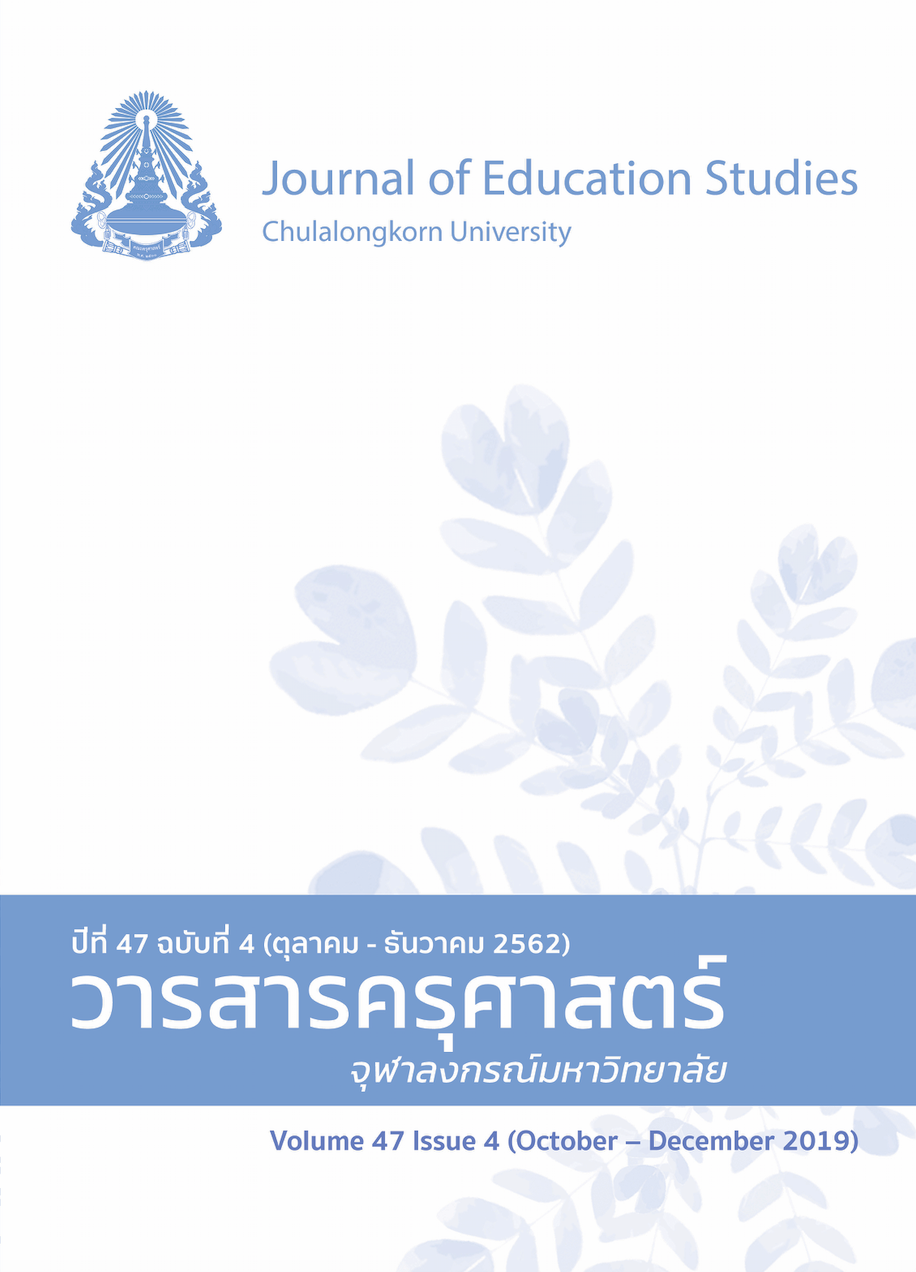Creative Use of Technology to Foster Young Children in the 21st Century
Keywords:
YOUNG CHILDREN, TECHNOLOGY WITH YOUNG CHILDREN, YOUNG CHILDREN SKILLS IN THE 21ST CENTURYAbstract
Creative use of technology provides meaningful ways by integration of technology toward to the development of young children skills in the 21st century aimed at providing children with the creativity thinking skills, critical thinking skills, communication skills and working with others. In order to prepare for learning in the midst of the fast – changing society. The children will use technologies such as computers, smartphones, tablets or cameras to learn various things through the use of five senses. The focus is on young children thinking, discuss rationally and join events with friends happily. Contribute to the development of knowledge for themselves. In short of using technology creatively can development a holistic of young children physical, emotional, social, and intellectual development. It is the root for 21st Century skills, which is an important foundation to develop the child as a person and learn how to use technology properly, preparing to step into the learning society.
References
กระทรวงศึกษาธิการ. (2553). พระราชบัญญัติการศึกษาแห่งชาติ พ.ศ. 2542 แก้ไขเพิ่มเติม (ฉบับที่ 2) พ.ศ. 2545 และ (ฉบับที่ 3) พ.ศ. 2553. กรุงเทพฯ: โรงพิมพ์คุรุสภาลาดพร้าว.
กระทรวงศึกษาธิการ. (2560). หลักสูตรการศึกษาปฐมวัย พุทธศักราช 2560. กรุงเทพมหานคร: โรงพิมพ์ชุมนุมสหกรณ์การเกษตรแห่งประเทศไทย.
ไดก์แมน, เอ. (2560). เด็กและหุ่นยนต์ [Boy+Bot] (น้านกฮูก, ผู้แปล). กรุงเทพมหานคร: แฮปปี้ คิดส์.
มานิตา ลีโทชวลิต อรรถนุพรรณ และ อรกานต์ เพชรคุม. (2558). เทคโนโลยีกับเด็กปฐมวัยใช้อย่างไรให้พอดี. วารสารศึกษาศาสตร์ มหาวิทยาลัยศิลปากร, 13(1), 23–34.
เลวีย์, เอ็ม. (2560). แม่ไก่แฮตตี้ พาลูกรักคืนรัง [Hattie Peck the Journey Home] (น้านกฮูก, ผู้แปล). กรุงเทพมหานคร: แฮปปี้ คิดส์.
สำนักงานคณะกรรมการพัฒนาการเศรษฐกิจและสังคมแห่งชาติ. (2559). เศรษฐกิจและสังคมแห่งชาติ ฉบับที่ 12 พ.ศ. 2560–2564. สืบค้นจาก http://www.nesdb.go.th/main.php?filename=develop_issue
ภาษาอังกฤษ
Couse, L. J., & Chen, D. W. (2010). A tablet computer for young children? Exploring its viability for early childhood education. Journal of research on technology in education, 43(1), 75–98.
Hutchison, A., & Reinking, D. (2011). Teachers’ perceptions of integrating information and communication technologies into literacy instruction: A national survey in the United States. Reading Research Quarterly, 46(4), 312–333.
Kalas, I. (2010). Recognizing the potential of ICT in early childhood education: Analytical survey. Moscow: UNESCO Institute for Information Technologies in Education.
O’hara, M. (2008). Young children, learning and ICT: A case study in the UK maintained Sector. Technology, Pedagogy and Education, 17(1), 29–40.
Parette, H. P., Quesenberry, A. C., & Blum, C. (2010) Missing the boat with technology usage in early childhood settings: A 21st century view of developmentally appropriate practice. Early Childhood Education Journal, 37(5), 335–343.
Piaget, J. (1952). The Origins of Intelligence in Children. New York: International University Press.
Schmid, R. F., Miodrag, N., & Difrancesco, N. (2008). A human-computer partnership: The tutor/child/computer triangle promoting the acquisition of early literacy skills. Journal of Research on Technology in Education, 41(1), 63–84.
The American Academy of Pediatrics. (2010). Limit Television. Retrieved from
https://www.aap.org/en-us/about-the-aap/aap-press-roomaap-press-room-media-center/Pages/Limit-Television-60-Second.aspx?nfstatus=401&nftoken=00000000-0000-0000-0000-000000000000&nfstatusdescription=ERROR%3a+No+local+token
The National Association for the Education of Young Children. (2012). Technology and interactive media as tools in early childhood programs serving children from birth through age 8. Retrieved from http://www.naeyc.org/files/naeyc/PS_technology_WEB.pdf




